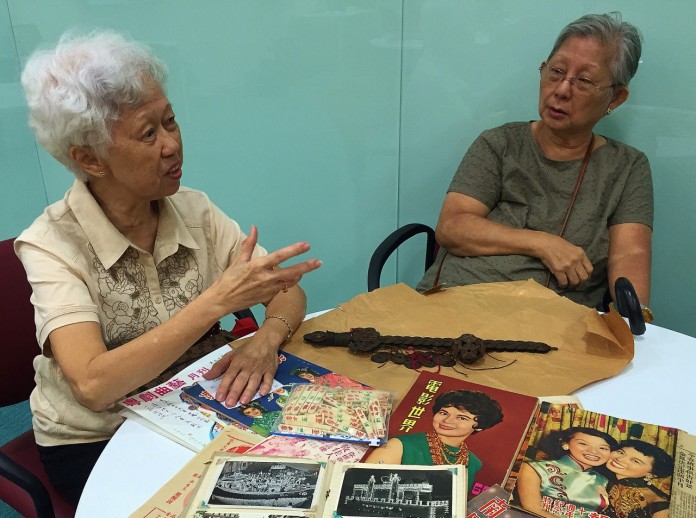SINGAPORE: As a teenager, Mdm Jessie Tang collected Chinese movie magazines and flyers, and Chinese opera posters and newspaper clippings dating back to the 1950s. For the longest time, these were simply stored in two boxes at the 76-year-old’s three-room flat at Towner Road.
“I would go for all these movies after school, so I would also collect all these. I also liked to listen to Chinese opera songs. Last time, we had Rediffusion, so I would come home, take out a songbook and listen to the songs on the radio,” she recalled. “To throw them would be a waste. But I don’t know if younger people nowadays are also interested in all of these.”
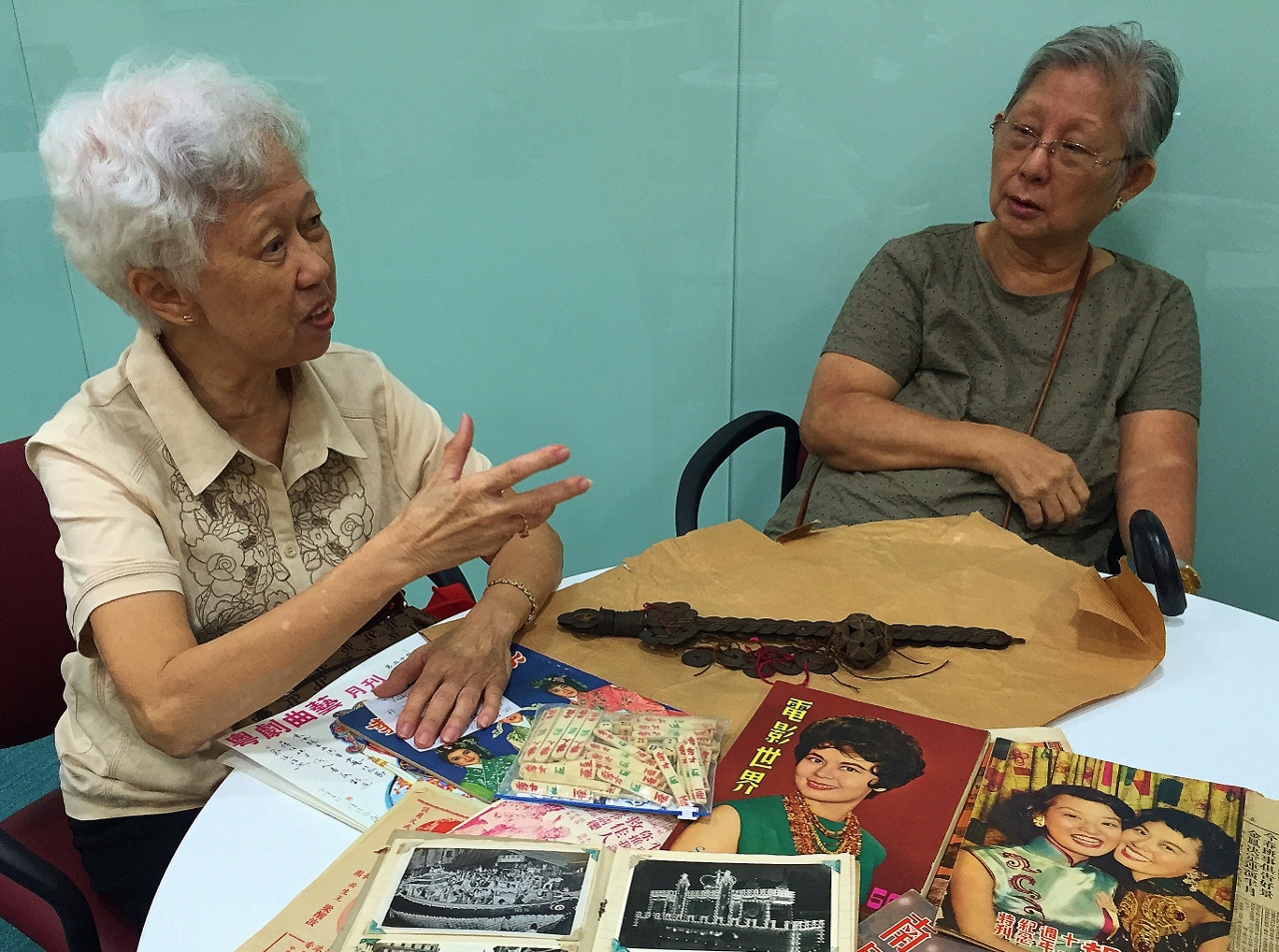
Mdm Jessie Tang (left) with her collection of old Chinese opera and movie paraphernalia. (Photo: Mayo Martin)
Mdm Tang will find out soon enough, as she will get to show off her precious memorabilia in a travelling pop-up exhibition in Whampoa next year.
This is part of an ongoing two-year community art and heritage project called Curating Whampoa, which was officially unveiled last Friday (Dec 16) at the Whampoa Community Club.
Organised by the Tsao Foundation, the initiative aims to empower the elderly residents of the area by encouraging them to share their stories and objects, through a series of ongoing mini-projects.
One of these is Tangible Stories, of which Mdm Tang’s prized collection is a part. It will also include other artefacts and objects contributed by around 18 to 20 other participants, such as Mdm Balbir Kaur.
The 67-year-old will be showcasing an old mortar and pestle, an old sewing machine and two rattan stools. All of these, she said, have been in the family’s possession for decades; the mortar and pestle, and the old sewing machine belonged to her mother, while the stools were bought from Changi Prison – and now belong to her daughter, Kelly, who used to sit on them at mealtimes.
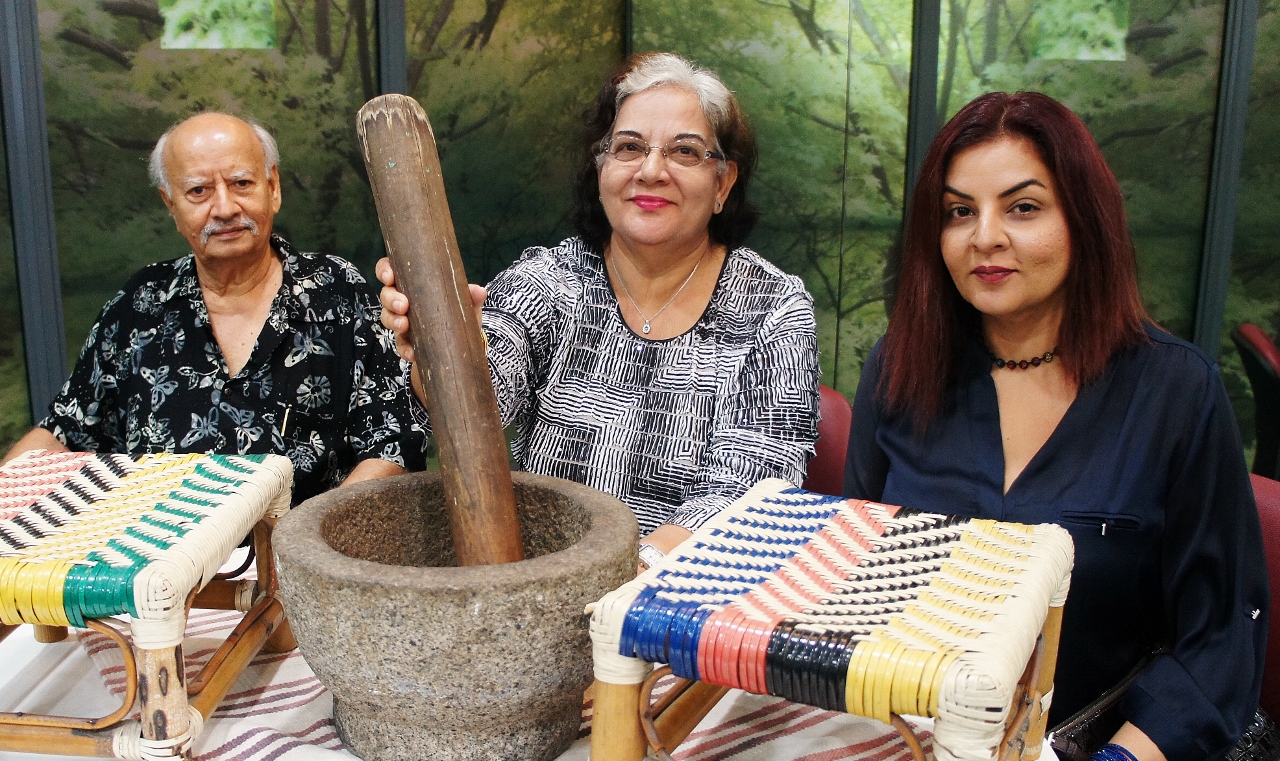
Mdm Balbir Kaur (centre), seen here with her husband and daughter, is showcasing two rattan stools and an old mortar and pestle from their family’s collection as part of Curating Whampoa’s Tangible Stories project. (Photo: Mayo Martin)
PERSONAL AND FAMILY MEMORIES
“Tangible Stories is based on the premise that objects are not something we just buy, use and throw away; they house both personal and family memories,” explained Thomas Kong, an architect and Associate Professor at the School of the Art Institute of Chicago, who serves as Curating Whampoa’s consultant.
For the past two months, Prof Kong and volunteers visited the homes of participants who willingly shared their stories and artefacts. “This is really important for us in order to capture a slice of the memories of elders living in Whampoa,” he said. “For example, we spent several hours at Jessie Tang’s place talking about her life, while she made Milo for us. That’s a very personal, intimate connection.”
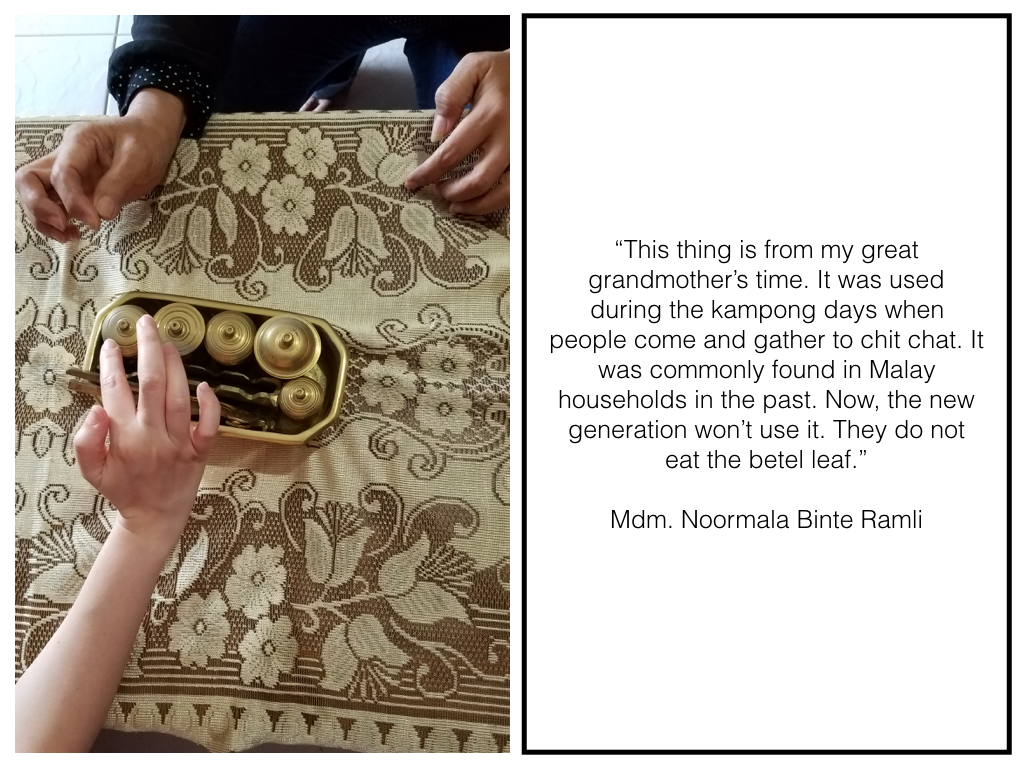
(Photo: Curating Whampoa, Tsao Foundation)
The Tangible Stories project is linked to a couple of other similar projects: Tangible Companions will see students and faculty from the School of the Arts collaborating with Whampoa residents to create artworks based on the latter’s objects, which will likewise go on display. Meanwhile, the Social Archiving project will be a unique attempt to preserve many of the objects that some residents are unable to keep.
The latter, in particular, came about when Mdm Tang, who lives by herself, revealed her plan to move into a smaller studio apartment early next year.
“She told us she couldn’t keep all her things and would throw them away. So we are now trying to help her archive her stuff,” said Prof Kong.

(Photo: Curating Whampoa, Tsao Foundation)
They have roped in the Asian Film Archive, which has shown interest in digitising Mdm Tang’s unique collection. But beyond creating a digital archive, there are also plans to link Mdm Tang with other people who might be willing to keep parts of her collection. “If you’re a film buff or a Chinese opera fan, we might invite you to Jessie’s place to meet her and maybe become the new owner (of some of the pieces in her collection) for safekeeping.”
CONFIDENCE THROUGH PHOTOGRAPHY
But Curating Whampoa isn’t simply looking to the past. Another project under the initiative is looking to empower elderly residents by encouraging them to actively, and literally, look to the present – with point-and-shoot cameras.
Non-profit organization Photovoice SG recently wrapped up a five-week community project called Everyday Whampoa, where they paired up photography volunteers with nine senior participants, who went around to take photos in the area. Their works will be exhibited together with those of Tangible Stories next year.
According to Photovoice SG executive director Jennifer Koh, the residents and volunteer-mentors would meet up weekly and practice photography together.
“The themes are entirely of the participants’ choosing,” she said, citing how one of the residents, Peggy, focused on her interest in calligraphy. Another, Ah Lek, visited different flats and took pictures of flowers they saw on the corridors of every single floor.
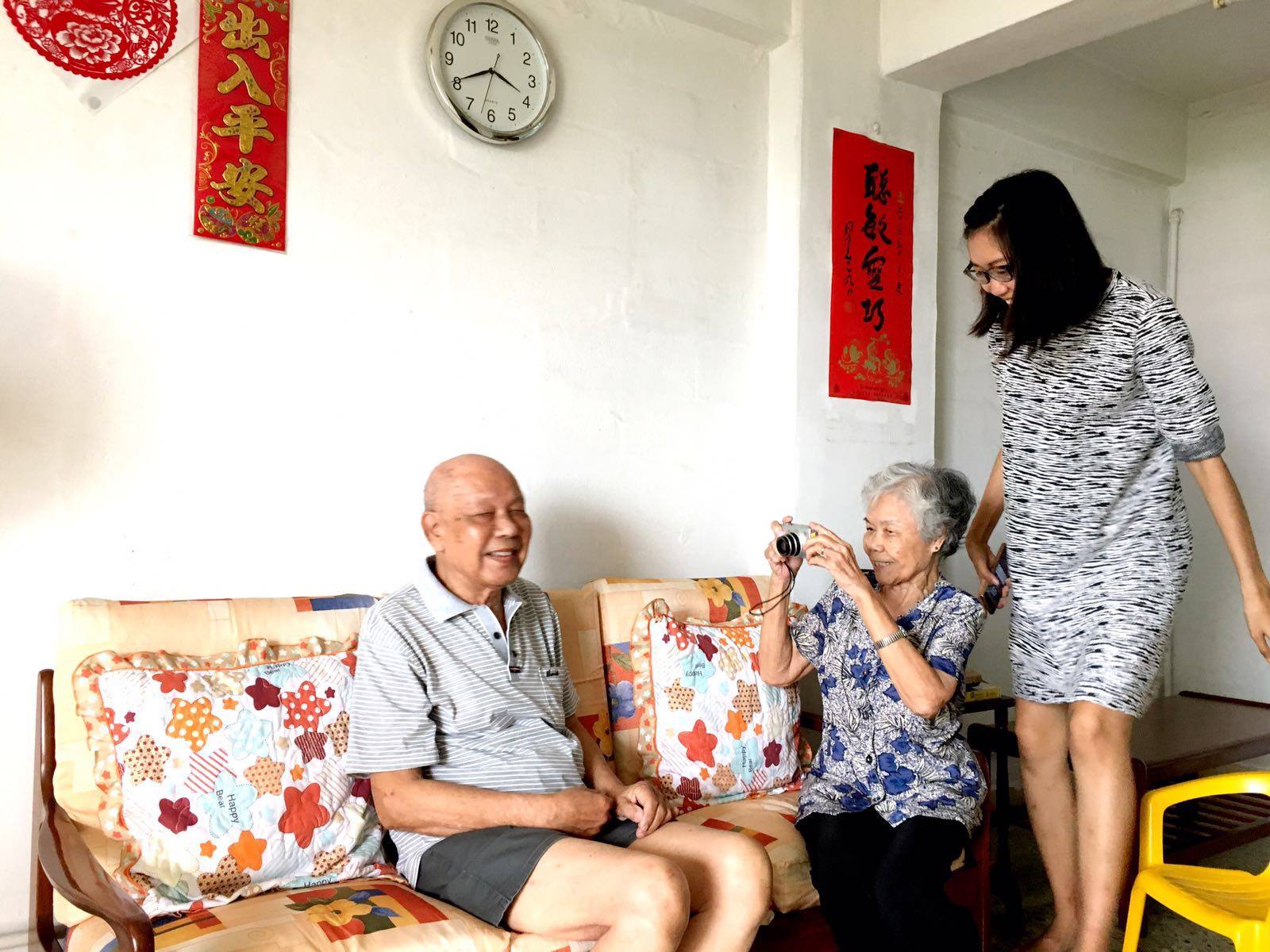
Madam Mok Sau Kheng practising portrait photography with her husband. (Photo: Lisa Lum)
“For some of the seniors, it was their first time to encounter the photographic medium. And in terms of the learning experience, the majority of them enjoyed it – they like to see their photos printed out and they like to show their work. Building confidence and a sense of community are very important.”
She added that it was also a learning experience for the volunteer-mentors. “In a way, they are also still learning from the seniors, in terms of their culture, heritage, and stories and values which are important to them.”
Indeed, Prof Kong said that working with Whampoa’s senior residents has been a revelation for him.
“When we say Whampoa, the first thing we think of is food, or even Balestier Road. But through this conversation (with its residents), you see there’s a very deep connection with the place. We tend to move from one flat to another, but many of them have stayed here at least 30 to 40 years and that deep connection is very amazing for me.”
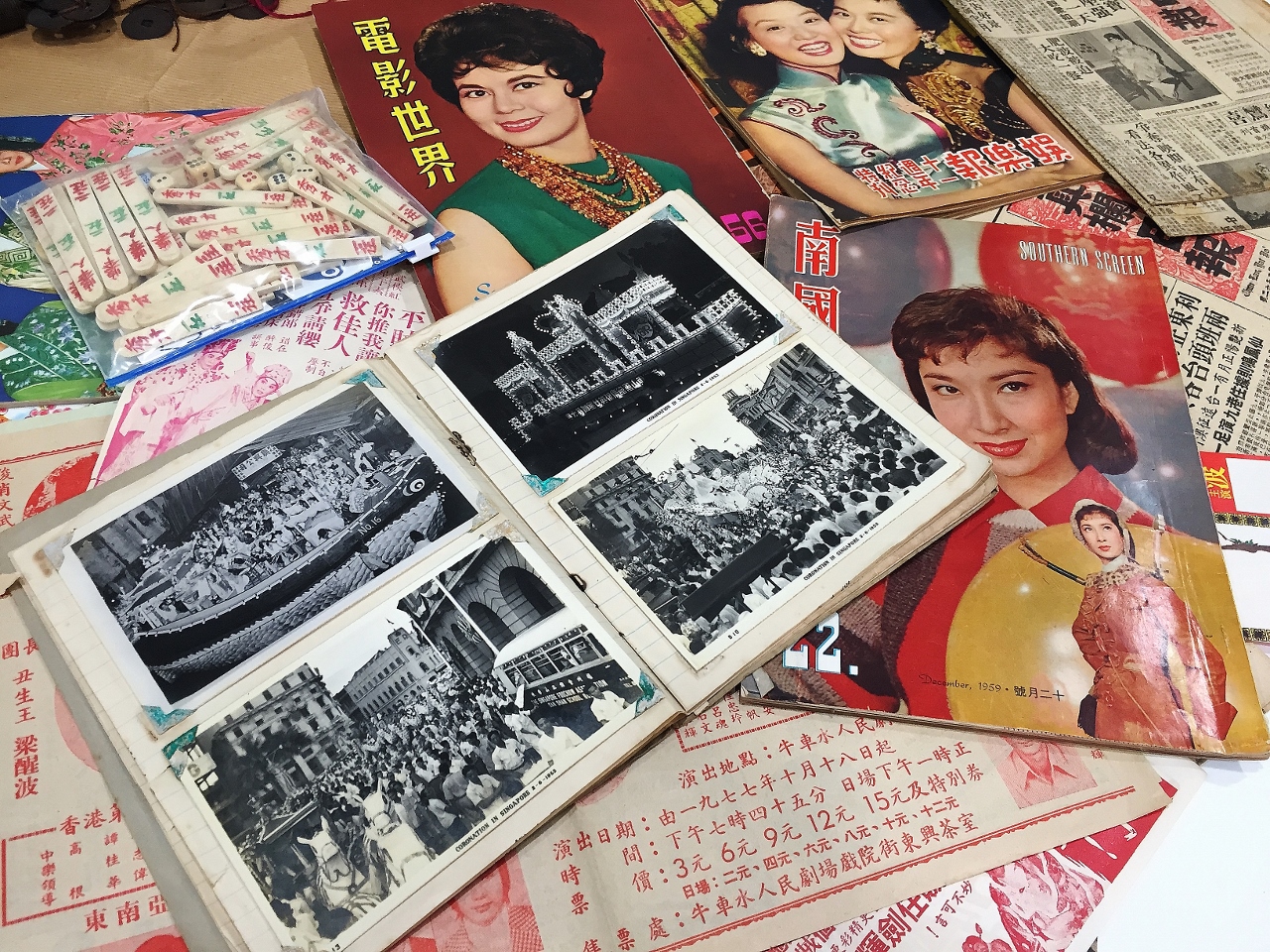
Aside from her movie and Chinese opera paraphernalia, Mdm Jessie Tang also kept a scrapbook on the festivities surrounding Queen Elizabeth II’s coronation in 1953. (Photo: Mayo Martin)
